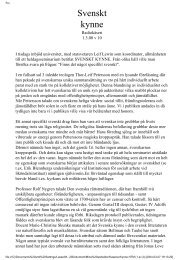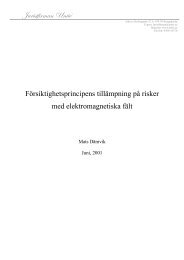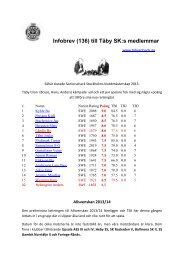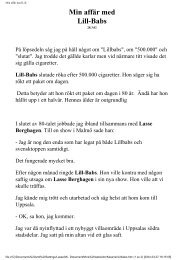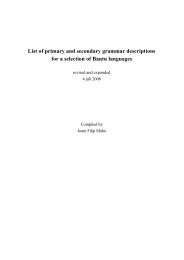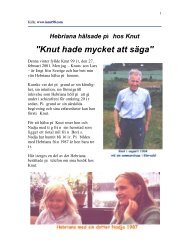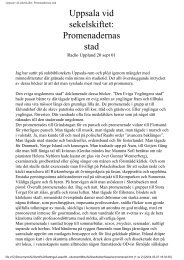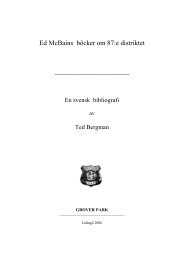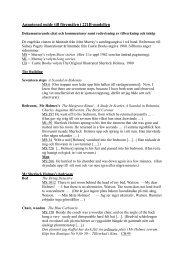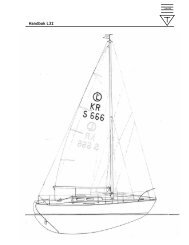NUGL Online - Glocalnet
NUGL Online - Glocalnet
NUGL Online - Glocalnet
You also want an ePaper? Increase the reach of your titles
YUMPU automatically turns print PDFs into web optimized ePapers that Google loves.
The 2nd New Updated Guthrie List<br />
The present document comprises an update and expansion of Malcolm Guthrie’s<br />
1971-classification of the Bantu languages. This is the second such update, the<br />
first being Maho (2003). This online document constitutes a simplified version of<br />
a forthcoming update currently being prepared for proper publication.<br />
The <strong>NUGL</strong> (or New Updated Guthrie List) is not offered as a prescriptive list of<br />
language names. The names used here are those that appear to be the most<br />
commonly used names in the literature, other Bantu classifications, and/or the<br />
ones explicitly preferred by authoritative sources.<br />
Obsolete, derogatory, or otherwise inapproariate names have been avoided,<br />
though some commonly used ones are retained in quotes.<br />
G43c..................... Makunduchi, Ka(l)e, “Hadimu”<br />
In general, the language names that appear in Guthrie’s 1971-classification have<br />
been retained, though some of the original spellings have been modernised,<br />
where necessary. Thus Guthrie’s ‘Kxhalaxadi’ appears here as ‘Kgalagadi’.<br />
Also, his many phonetic symbols have been replaced with more standard<br />
(ASCII) characters. Many of his diacritics have been omitted entirely.<br />
The language names are generally given without prefixes. The use of a prefix is<br />
grammatically obligatory in any specific Bantu language, but this text-cum-list is<br />
written in English, and I see no reason to adopt foreign inflectional paradigms<br />
when writing English prose (cfr Bailey 1995:34-35). Still, prefixes are occasionally<br />
added when, for instance, a prefixed name has become the standard English<br />
form (e.g. Kiswahili, Setswana), or when prefixed names can help to disambiguate<br />
two (orthographically) identical language names.<br />
B503..................... Vili, Ibhili<br />
H12....................... Vili, Civili<br />
Many entries below contain more than one name. Usually these are variant<br />
names, as in the examples immediately above. However, the literature is not




